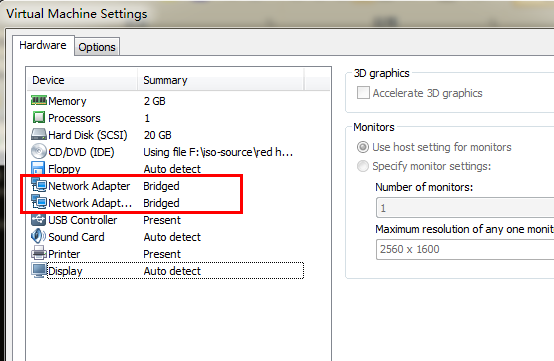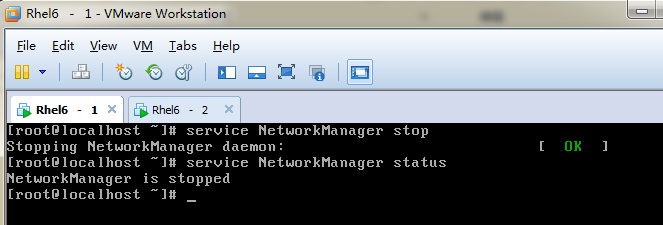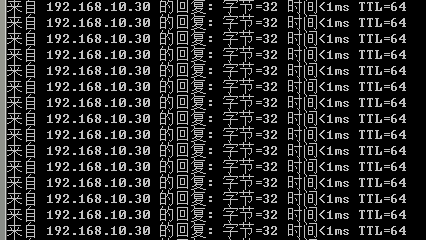Realizing multiple network card binding in Linux system in practice
| Introduction | For servers, the stability of network equipment is also important, especially network cards. In production systems, the reliability of the network card is even more important. Multiple network cards are bound to one IP address. When one network card is physically damaged, the other network card is automatically enabled and provides normal services That is: by default, only one network card works, and other network cards serve as backup network cards to provide redundant support. |
Highly efficient overlay network transmission rate, load balancing
Network load balancing is commonly used in file servers. For example, three network cards are used as one to solve the problem of excessive traffic and excessive pressure on the server network for one IP address.
For file servers, such as NFS or SAMBA file servers, no administrator will create multiple IP addresses for the file servers on the intranet to solve the network load problem. If the file server is on an intranet, most of the file servers use the same IP address for the convenience of management and application. For a local network of 100M, the network pressure is extremely high when the file server is used by multiple users at the same time, especially SAMABA and NFS servers. In order to solve the problem of using the same IP address and breaking through traffic restrictions, after all, network cables and network cards have limits on data throughput. If you have limited resources, implement network load balancing.

Steps:
1. First set up 2 network cards for the virtual machine:

2. Close NetworkManager in the system:

3. Edit the file /etc/modprobe.d/dist.conf and add alias bond0 bonding:

4. Modify ifcfg-eth0 ifcfg-eth1 in /etc/sysconfig/network-scripts and create bond0:

miimon refers to how often to check the network, the unit is ms (milliseconds)
mode=0: Balanced load mode, both network cards are working, load balancing.
mode=1: automatic active and backup mode, one of the network cards is working (if eth0 is disconnected)
will automatically switch to another block network card (eth1 as backup) Experimental results:
1. Restart the network. service network restart, or computer.
2. Use another virtual machine to ping the host to which the network card is bound.
3. If you ipdown any network card, network communication will not be affected.

Original article from: https://www.linuxprobe.com/ethernet-channel-bonding.html
Original address of this article: https://www.linuxprobe.com/ethernet-channel-bonding.htmlEditor: Liu Xun, auditor: None
Recommend some articles related to this article for you:
- Linux changes the network card name
- These cloud security errors put data at risk
- The capacity of a single strip can be up to 256GB of DDR5 memory starts shipping this year
- The history of data center development
- 7 marketing tips for blockchain startups
- The father of Linux removes AWS engineer’s patch
- The switching relationship between the terminal interface and the graphical interface in Linux
- "Front-end Engineering: System Design and Practice" pdf e-book free download
- Your understanding of the Linux window Do you know the management program Tmux?
- Important MySQL document storage knowledge points literacy
The above is the detailed content of Realizing multiple network card binding in Linux system in practice. For more information, please follow other related articles on the PHP Chinese website!

Hot AI Tools

Undresser.AI Undress
AI-powered app for creating realistic nude photos

AI Clothes Remover
Online AI tool for removing clothes from photos.

Undress AI Tool
Undress images for free

Clothoff.io
AI clothes remover

AI Hentai Generator
Generate AI Hentai for free.

Hot Article

Hot Tools

Notepad++7.3.1
Easy-to-use and free code editor

SublimeText3 Chinese version
Chinese version, very easy to use

Zend Studio 13.0.1
Powerful PHP integrated development environment

Dreamweaver CS6
Visual web development tools

SublimeText3 Mac version
God-level code editing software (SublimeText3)

Hot Topics
 deepseek web version entrance deepseek official website entrance
Feb 19, 2025 pm 04:54 PM
deepseek web version entrance deepseek official website entrance
Feb 19, 2025 pm 04:54 PM
DeepSeek is a powerful intelligent search and analysis tool that provides two access methods: web version and official website. The web version is convenient and efficient, and can be used without installation; the official website provides comprehensive product information, download resources and support services. Whether individuals or corporate users, they can easily obtain and analyze massive data through DeepSeek to improve work efficiency, assist decision-making and promote innovation.
 How to install deepseek
Feb 19, 2025 pm 05:48 PM
How to install deepseek
Feb 19, 2025 pm 05:48 PM
There are many ways to install DeepSeek, including: compile from source (for experienced developers) using precompiled packages (for Windows users) using Docker containers (for most convenient, no need to worry about compatibility) No matter which method you choose, Please read the official documents carefully and prepare them fully to avoid unnecessary trouble.
 BITGet official website installation (2025 beginner's guide)
Feb 21, 2025 pm 08:42 PM
BITGet official website installation (2025 beginner's guide)
Feb 21, 2025 pm 08:42 PM
BITGet is a cryptocurrency exchange that provides a variety of trading services including spot trading, contract trading and derivatives. Founded in 2018, the exchange is headquartered in Singapore and is committed to providing users with a safe and reliable trading platform. BITGet offers a variety of trading pairs, including BTC/USDT, ETH/USDT and XRP/USDT. Additionally, the exchange has a reputation for security and liquidity and offers a variety of features such as premium order types, leveraged trading and 24/7 customer support.
 Ouyi okx installation package is directly included
Feb 21, 2025 pm 08:00 PM
Ouyi okx installation package is directly included
Feb 21, 2025 pm 08:00 PM
Ouyi OKX, the world's leading digital asset exchange, has now launched an official installation package to provide a safe and convenient trading experience. The OKX installation package of Ouyi does not need to be accessed through a browser. It can directly install independent applications on the device, creating a stable and efficient trading platform for users. The installation process is simple and easy to understand. Users only need to download the latest version of the installation package and follow the prompts to complete the installation step by step.
 Get the gate.io installation package for free
Feb 21, 2025 pm 08:21 PM
Get the gate.io installation package for free
Feb 21, 2025 pm 08:21 PM
Gate.io is a popular cryptocurrency exchange that users can use by downloading its installation package and installing it on their devices. The steps to obtain the installation package are as follows: Visit the official website of Gate.io, click "Download", select the corresponding operating system (Windows, Mac or Linux), and download the installation package to your computer. It is recommended to temporarily disable antivirus software or firewall during installation to ensure smooth installation. After completion, the user needs to create a Gate.io account to start using it.
 Ouyi Exchange Download Official Portal
Feb 21, 2025 pm 07:51 PM
Ouyi Exchange Download Official Portal
Feb 21, 2025 pm 07:51 PM
Ouyi, also known as OKX, is a world-leading cryptocurrency trading platform. The article provides a download portal for Ouyi's official installation package, which facilitates users to install Ouyi client on different devices. This installation package supports Windows, Mac, Android and iOS systems. Users can choose the corresponding version to download according to their device type. After the installation is completed, users can register or log in to the Ouyi account, start trading cryptocurrencies and enjoy other services provided by the platform.
 gate.io official website registration installation package link
Feb 21, 2025 pm 08:15 PM
gate.io official website registration installation package link
Feb 21, 2025 pm 08:15 PM
Gate.io is a highly acclaimed cryptocurrency trading platform known for its extensive token selection, low transaction fees and a user-friendly interface. With its advanced security features and excellent customer service, Gate.io provides traders with a reliable and convenient cryptocurrency trading environment. If you want to join Gate.io, please click the link provided to download the official registration installation package to start your cryptocurrency trading journey.
 How to Install phpMyAdmin with Nginx on Ubuntu?
Feb 07, 2025 am 11:12 AM
How to Install phpMyAdmin with Nginx on Ubuntu?
Feb 07, 2025 am 11:12 AM
This tutorial guides you through installing and configuring Nginx and phpMyAdmin on an Ubuntu system, potentially alongside an existing Apache server. We'll cover setting up Nginx, resolving potential port conflicts with Apache, installing MariaDB (






